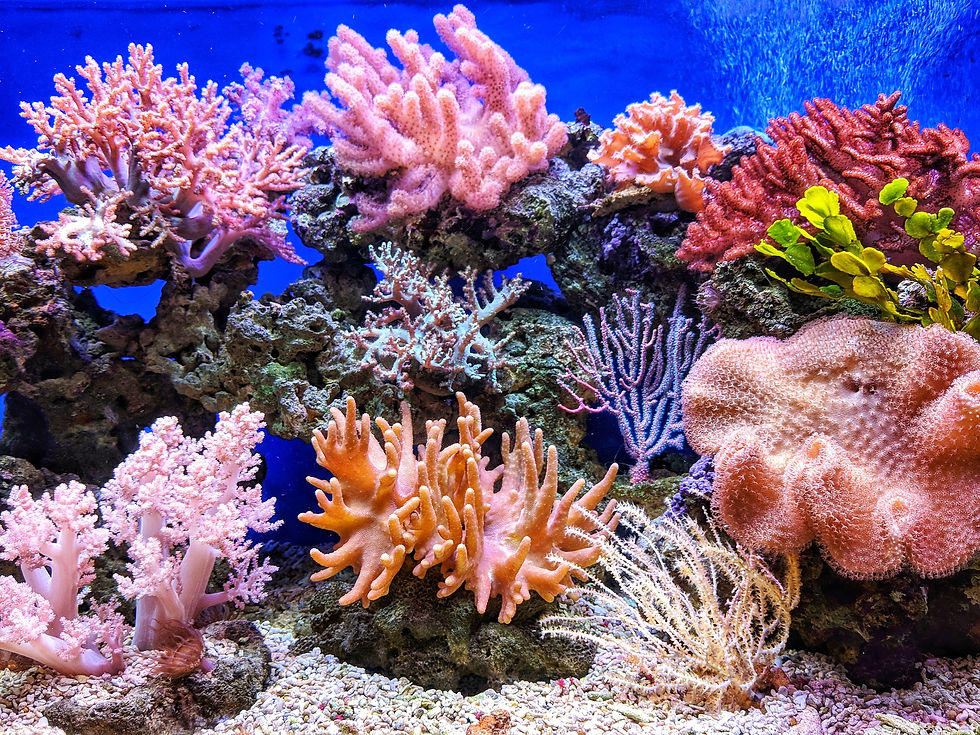“Sea” a Show
- Isobel Hinchcliffe

- Jun 14, 2021
- 3 min read
Updated: Aug 16, 2021
The oceans are “dyeing“
Clothing often grabs our attention with its bright colours. Light coloured clothing matches the spring/summer season with darker colours interlinked with winter and autumn.
These dyes however are often dumped into the ocean, as it’s far more ‘cost-effective’ to dispose of it there, even at the risk of health to humans, marine life and animals – in fact many of these dyes are carcinogenic. In China it is estimated that 90% of local groundwater is polluted, and 72% of that is textile dye alone.
Mills can use up to 200 tons of water per ton of dyed fabric, but as huge as this process seems, it only produces around 1400 pieces of clothing, which in comparison is minute. Further statistics report that all in all, 17-20% of industrial water pollution is owed to fabric dyes and treatments.
Although eco-friendly dyeing processes are available, it comes at a large cost to the manufacturer, and in this instance the brand, so for convenience this pollutive method is continued.
Nike, who although have questionable ties to China, have made progress to improve in recent years. They have moved towards sustainable production, specifically with their football kits. Nike saved five billion plastic bottles from going to waste since 2012 by reusing them in clothing and shoes. 75% of all Nike products include reused plastic – making Nike the leading re-user of plastics in the current fashion industry.
Nike also have begun to pursue waterless dyeing technologies into their product lines, but because of the costs, it is unclear whether this method will catch on, particularly with smaller brands and independent clothing stores.
If bigger brands start to use this method however, a dent will be put in the uneconomical processes, and through the circulation of renewed clothing, and hopefully it will be open for wider access for the fashion industry.
In this case, we are relying on bigger brands like Nike and adidas to champion the use of eco-friendly dye in order for this to trickle down to smaller brands and businesses. Through more brands creating a wider demand for the eco-friendly dye it will hopefully lead to a cheaper price and allow for an even more accessible way of dyeing clothing that is eco-friendly and better for smaller, local businesses.
Battle of the brands
It is not only Nike however, that is a leader in the eco-industry, Zara cuts plastic clothing packaging out entirely and uses paper which is 100% recyclable and biodegradable. This is a factor that should be common practice in the fashion industry, as paper packaging is not only better for the environment, but can be reused and recycled far more easily than the soft plastic packaging we are so used to now.
Sticking with clothing brands – Mango uses materials that are also entirely recyclable, that does not contain any microfibre plastics. Their latest clothing line is entirely biodegradable and uses sustainable materials only such as cotton, modal and lyocell.
Clothes aren’t the only biodegradable or reusable materials on the market however, and recently shoe brands have caught up, with Hunter offering a trade in service. Consumers can recycle their welly boots no matter how old they are, and Hunter can reuse the materials to make more boots.
Adidas has also recently brought out a running trainer that’s completely recyclable, and can reuse the materials to make other pairs of shoes, in order to cut down on single use plastics.
Local love
All of the above-mentioned brands are huge global players, able to mass produce, and who contribute to fast fashion the most. Shopping locally is something we considered in an earlier article, as not only does it contribute to a circular economy, but also improves the local area and the fashion industry.
Local manufacturing adds to a more diverse fashion industry as it allows for a finite number of clothing items instead of the countless fast fashion garments that are wasted every year whenever the industry moves onto another fad.
Physically shopping locally is also better for the environment and oceans as it will cut down on the amount of plastic packaging used, which is key to a brighter future for the planet.



Comments